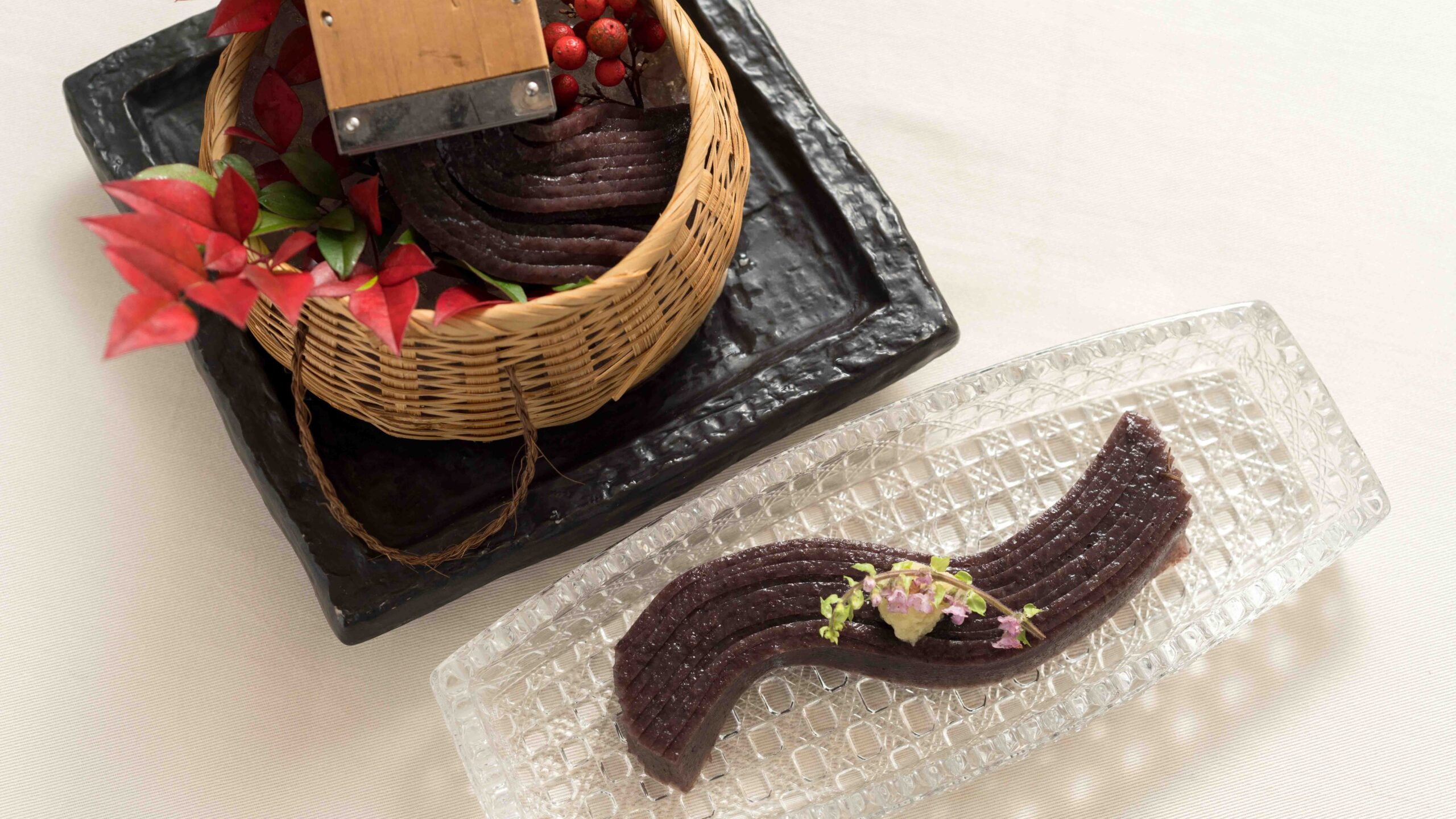
Howdy! Let’s talk about a fascinating dish from Tottori Prefecture that has roots stretching way back. It’s called “Igisu,” and it’s made from a type of seaweed. Get this – they were even sending it to the Emperor way back in the Asuka and Nara periods! That’s some serious history right there. Let’s dive in and see what makes this sea veggie so special.
Dish Name: Igisu
- Region / Location: Tottori Prefecture
- Primary Area of Tradition: Central region
- Main Ingredients: Dried igisu seaweed
How It’s Eaten / Served
To enjoy Igisu, you first need to rehydrate the dried seaweed. Then, it’s simmered over low heat until it dissolves. This liquid is poured into a container to set, much like jelly. Before serving, it’s often sprinkled with sesame seeds. The common ways to eat it are with vinegared miso (sumiso), mustard soy sauce (karashi joyu), or ginger soy sauce (shoga joyu). Some folks even enjoy it with dressing or brown sugar syrup. The trick is to simmer the igisu until it’s nice and smooth. It might look like sweet bean jelly (yokan), but once you taste it, you get this wonderful ocean aroma and a unique texture. It’s a staple in vegetarian Buddhist cuisine (shojin ryori) and is also low in calories, packed with water-soluble fiber and minerals.
Cultural Background and Preservation
Igisu is made from igisu-kusa, a type of red algae also known as egonori. This seaweed washes ashore in the spring and is a variety of agar-agar. It has lots of thin, thread-like branches that fork repeatedly and can grow up to about 20 cm long, often clinging to the branches of Sargassum seaweed. It thrives from summer to autumn and is mainly harvested in the fishing ports of the central and western regions of Tottori. The harvested igisu-kusa is quickly dried under the strong summer sun. This process, involving washing and sun-drying three or four times while removing other seaweeds, helps preserve it.
What’s really interesting is that Igisu naturally solidifies without any added gelling agents, just like agar-agar and tokoroten (another jelly-like dish). This basic method of boiling and setting the igisu seaweed is also seen in other regional dishes like igisu tofu and egoneri. Igisu is often served in vegetarian meals and at festivals, seasonal events, and formal occasions like weddings and funerals. For many, the word “igisu” brings to mind New Year’s celebrations or Buddhist memorial services. Besides being made at home, you can also find Igisu in supermarkets and roadside stations these days, showing its continued presence in local food culture.
Additional information:
- Agar-agar: A gelatinous substance derived from red algae, used as a thickening agent in cooking.
- Vegetarian Buddhist cuisine (Shojin Ryori): Traditional Japanese vegetarian dishes prepared by Buddhist monks, emphasizing simplicity and the natural flavors of the ingredients.
- Vinegared miso (Sumiso): A sauce made from miso (fermented soybean paste) mixed with vinegar and often sugar.
- Mustard soy sauce (Karashi Joyu): Soy sauce mixed with Japanese mustard, which has a sharp and pungent flavor.
- Ginger soy sauce (Shoga Joyu): Soy sauce infused with grated ginger.
- Sweet bean jelly (Yokan): A thick, jellied dessert made from red bean paste, agar-agar, and sugar.
- Tokoroten: A jelly-like dish made from agarophytes (a type of red algae), often served chilled with various sauces.
The information about regional cuisine featured on this website (Piggy's Grandma of Japan) is summarized and adapted from the Ministry of Agriculture, Forestry and Fisheries of Japan (MAFF) website, "Our Regional Cuisines"Additional commentary is provided based on the unique experiences and perspectives of the site's editors.
The copyright for the original content regarding regional cuisine belongs to the Ministry of Agriculture, Forestry and Fisheries of Japan.
The summaries and adaptations published on this site are intended for informational purposes only. Piggy's Grandma of Japan does not guarantee the accuracy or completeness of this information. For the most accurate and complete details, please refer to the original pages on the MAFF website.

